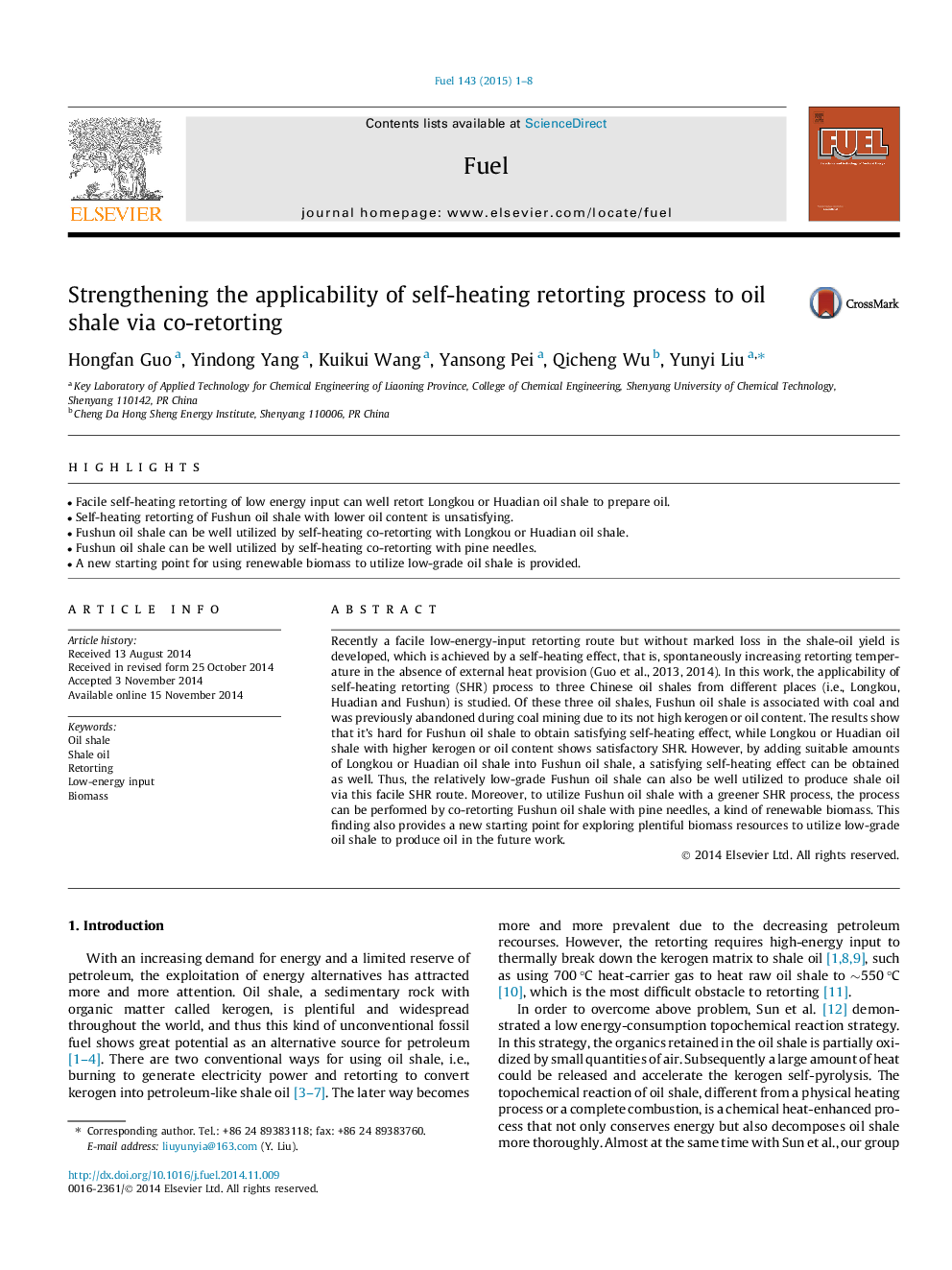| Article ID | Journal | Published Year | Pages | File Type |
|---|---|---|---|---|
| 6635668 | Fuel | 2015 | 8 Pages |
Abstract
Recently a facile low-energy-input retorting route but without marked loss in the shale-oil yield is developed, which is achieved by a self-heating effect, that is, spontaneously increasing retorting temperature in the absence of external heat provision (Guo et al., 2013, 2014). In this work, the applicability of self-heating retorting (SHR) process to three Chinese oil shales from different places (i.e., Longkou, Huadian and Fushun) is studied. Of these three oil shales, Fushun oil shale is associated with coal and was previously abandoned during coal mining due to its not high kerogen or oil content. The results show that it's hard for Fushun oil shale to obtain satisfying self-heating effect, while Longkou or Huadian oil shale with higher kerogen or oil content shows satisfactory SHR. However, by adding suitable amounts of Longkou or Huadian oil shale into Fushun oil shale, a satisfying self-heating effect can be obtained as well. Thus, the relatively low-grade Fushun oil shale can also be well utilized to produce shale oil via this facile SHR route. Moreover, to utilize Fushun oil shale with a greener SHR process, the process can be performed by co-retorting Fushun oil shale with pine needles, a kind of renewable biomass. This finding also provides a new starting point for exploring plentiful biomass resources to utilize low-grade oil shale to produce oil in the future work.
Related Topics
Physical Sciences and Engineering
Chemical Engineering
Chemical Engineering (General)
Authors
Hongfan Guo, Yindong Yang, Kuikui Wang, Yansong Pei, Qicheng Wu, Yunyi Liu,
